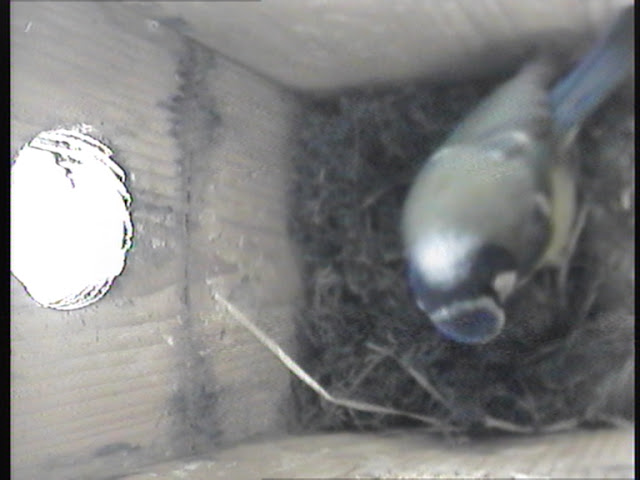My Blog List
Tuesday, 28 May 2024
First dragonflies
Tuesday, 21 May 2024
A hornet in the garden
Four days ago in the meadow I spotted something large and yellow out of the corner of my eye but it flew off before I could see what it was. Armed with a camera I stood waiting for another view and after a few further brief glimpses I got a couple of blurry photos to confirm it was a European Hornet queen (Vespa crabro).
Wednesday, 15 May 2024
An Aussie ladybird
A new ladybird for me, this is a native of Australia but was found in ivy in my mother's garden in Northamptonshire. Rhyzobius forestieri eats scale insects and because of this has been introduced to various parts of the world as a biological control agent, notably to California in the 1890s and to Mediterranean countries in the 1980s to control scale insects on olive trees. It was first reported in England in the garden of the Natural History Museum, presumably because there was someone there who could recognise it, and has since spread out across the South East and Midlands and has been added to the list of established British ladybirds.
Rhyzobius forestieri is small and black and covered in wavy white hairs. The abdomen underneath is orange and this one obligingly rolled over for a photo of its tummy.
Wednesday, 8 May 2024
Blue tits in the camera nest box
Exciting news from my nest box camera. The box was put up in 2009 and had a nest every year until 2019, first with great tits, once with tree sparrows and for nine years with blue tits. The tree sparrows were a nuisance because they built their nest so the camera couldn't see in, so there is now a 28mm entrance plate over the hole to allow only blue tits access. For the last four years the box was unused, although in one year a nest was nearly completed and then abandoned, probably because a sparrowhawk took the occupant.
This year things have looked more encouraging. I checked the camera every few days and noticed nest material first on 20 April.
And two days ago, on 06 May, the first egg.
Yesterday I think there was a second egg, although it wasn't easy to see, and today I expect we are up to three but the bird has covered them over while she is out.
In the nine years that the box was used by blue tits building started between 09 March and 04 April. The first egg was laid from 23 April - 10 May with clutches of 2-11 eggs. The later the first egg, the smaller the clutch tended to be. The total of eggs in nine year was 52, of which 51 hatched and all 51 fledged.
Three years ago I modified the box by putting in a slightly angled false back wall and moving the camera up and back as far as it will go so as to give a view of the whole of the floor and the entrance hole. Looking at it now the focus is a bit too close so the nest is slightly out of focus but it is too late to do anything about it this year. It will be fine once the chicks are hatched.The camera and the software are old and the only computer compatible with them is my 16 year old Sony. So I am keeping my fingers crossed that the sparrowhawk doesn't take one of the parents and the camera and computer last long enough to see the birds fledge. I'll put regular updates on a separate page accessible via Nestbox Cam 2024 at the top of the blog.
Thursday, 2 May 2024
WeaselCam and StoatCam in April
I think most of the weasels and stoats I am seeing are males and this perhaps discourages any females. This weasel, however, I think is a female, noticeably smaller and slimmer than a male.
One thing I have learned - stoats don't like the camera box. I have only once had a glimpse of each a male and a female stoat in the camera box but they are in the garden fairly regularly. It may be that the entrance pipes are a bit small for them at 100mm but they are the largest that will fit the box. Or perhaps stoats prefer more open areas to hunt in.
Weasels, on the other hand, continue to visit the boxes but even then the views are brief. Here are a few glimpses of weasels, all but the last at normal speed. Although weasels are said to hunt day and night I have never seen one on the cameras at night. The black and white infrared clip in this sequence was after dawn but not yet light enough for the camera to be in colour mode.






























